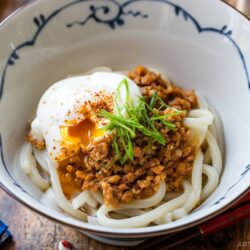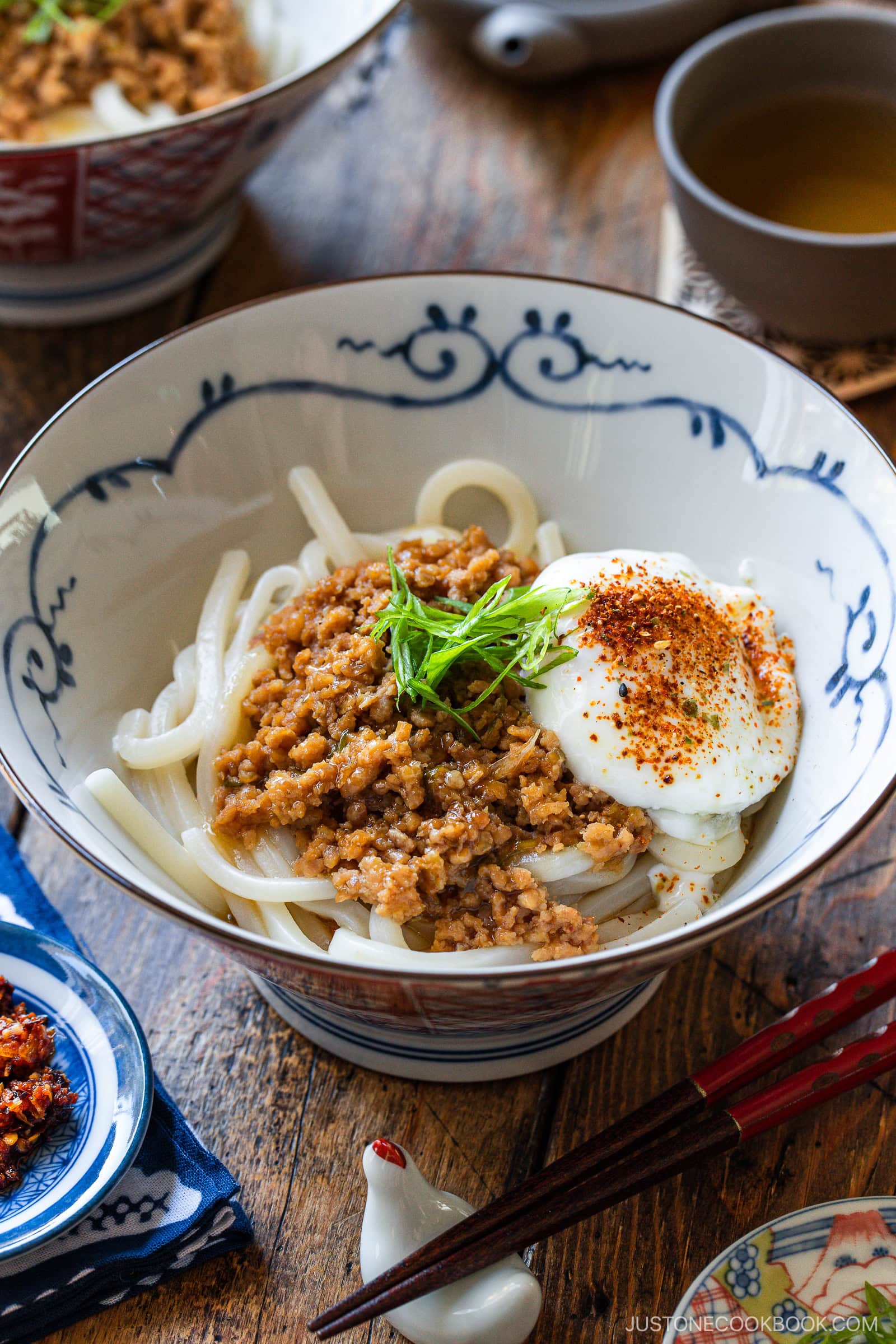
A bowl of Soboro Udon is the ultimate comfort meal when you want something quick yet satisfying. The savory ground chicken sauce coats every chewy strand of udon, while the silky Japanese-style poached egg adds a touch of luxury. It’s fast and fuss-free to make, ideal for busy nights when you crave a warm, nourishing dinner that feels special without extra effort.
If you love Japanese noodle dishes, try my Curry Udon, Yaki Udon (Stir-Fried Udon), and Beef Udon recipes next!
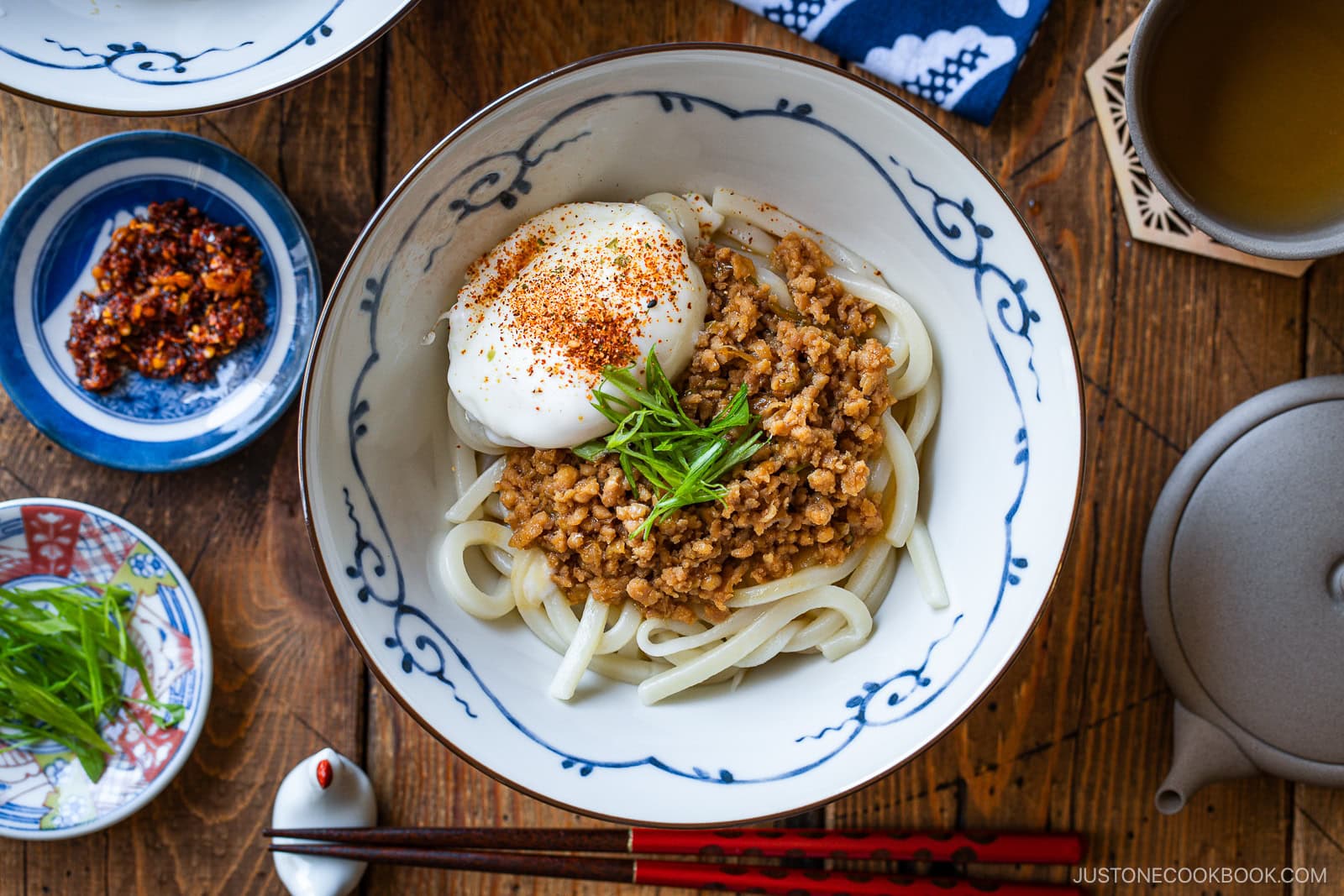
What is Soboro Udon?
Homey soboro udon (そぼろうどん) is a soupless Japanese noodle dish featuring ground chicken cooked in a sweet soy-based sauce and served over hot and springy udon noodles. The word soboro means “crumbled” or “minced,” and it’s often used for rice bowls (soboro don) and bento. When combined with chewy udon noodles and a Japanese-style poached egg called onsen tamago, it becomes a cozy and nourishing one-bowl meal you’ll want to make again and again.
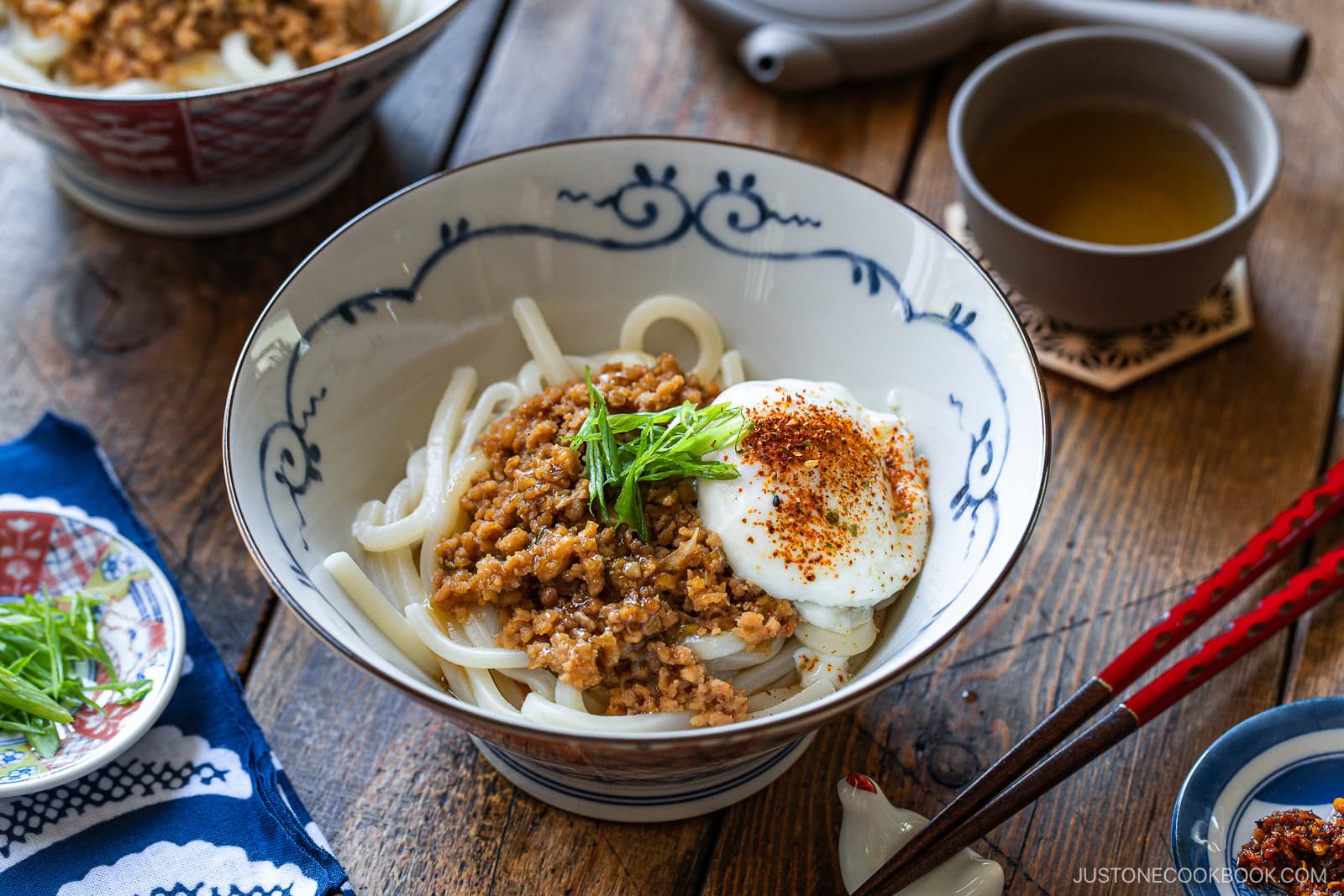
Ingredients for Soboro Udon
- udon noodles – I recommend frozen Sanuki udon from the Japanese/Asian market
- ground chicken
- large eggs
- green onion/scallion
- ginger
- toasted sesame oil
- for the sauce:
- mirin, soy sauce, and sugar
- potato starch (or cornstarch) and water – to thicken the sauce
- shichimi togarashi (Japanese seven spice) – optional
Find the printable recipe with measurements below.
Jump to RecipeSubstitutions
- mirin – If you don’t have it, try this handy substitution: Use 1 tablespoon sake (or water) + 1 teaspoon sugar for every 1 tablespoon mirin. The flavor isn’t the same, but it’s close.
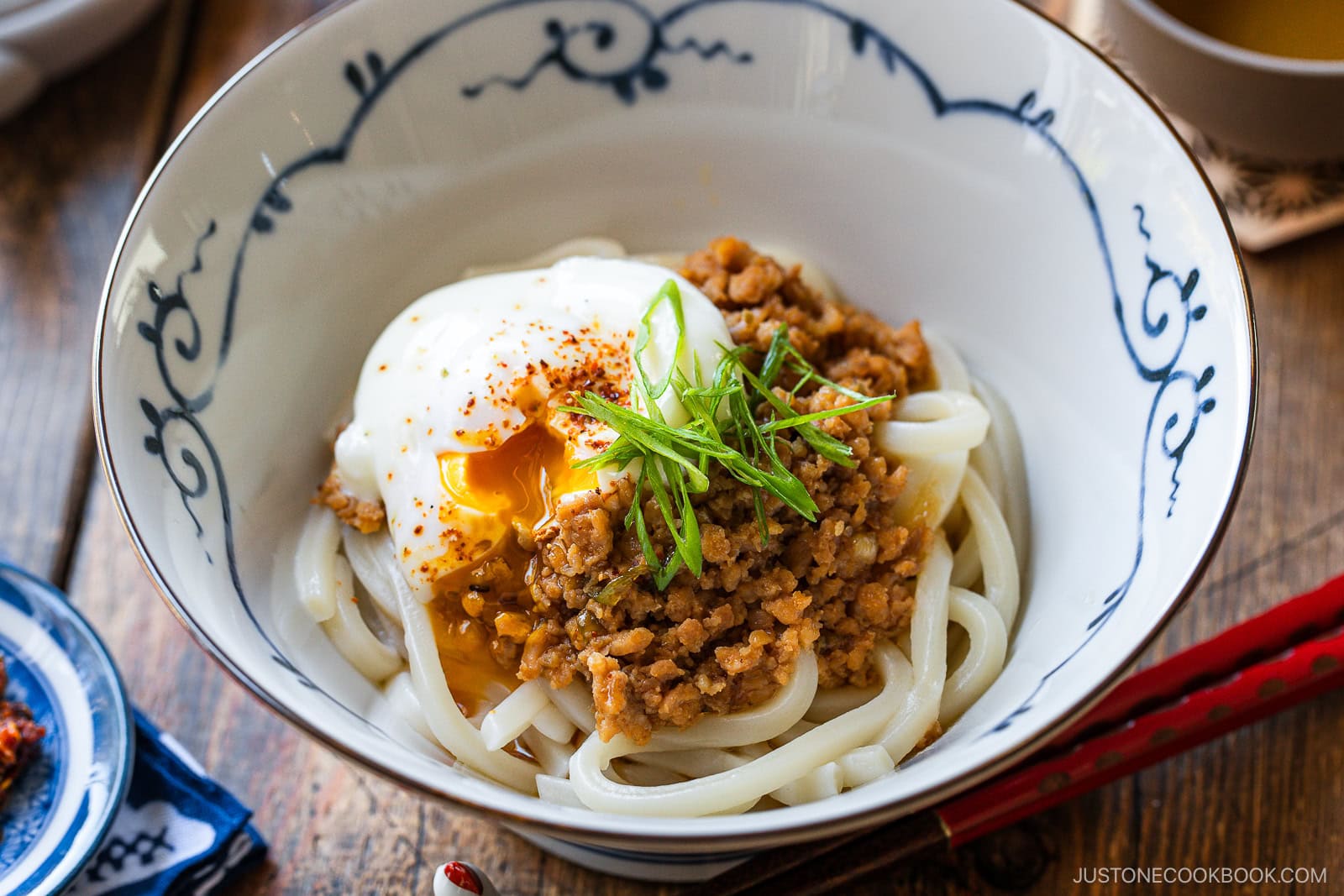
How to Make Soboro Udon
Preparation
- Prep the ingredients. Thinly slice the green onion and separate the white and green parts. Peel and grate the ginger (you’ll need about 1 teaspoon).
- Mix the seasonings. In a small bowl, combine mirin, soy sauce, and sugar. In another bowl, stir together potato starch and water until smooth, then add it to the sauce. Mix well and set aside.
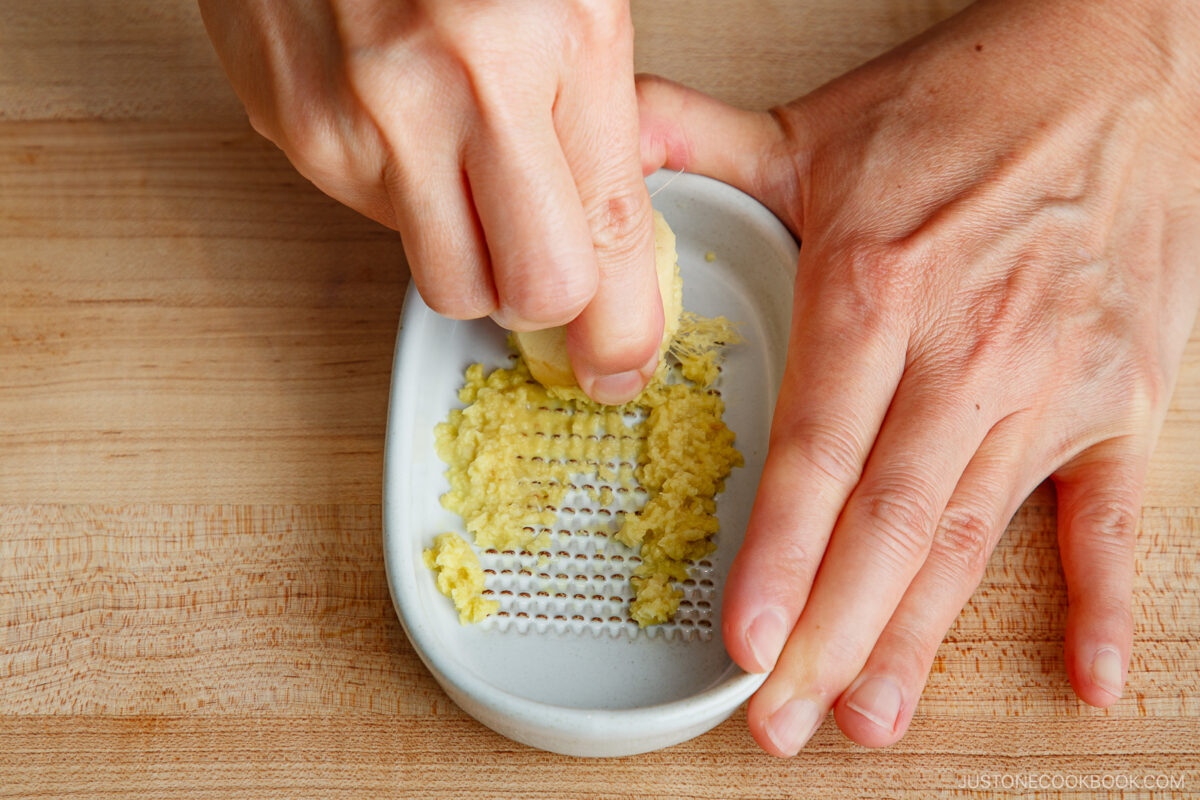
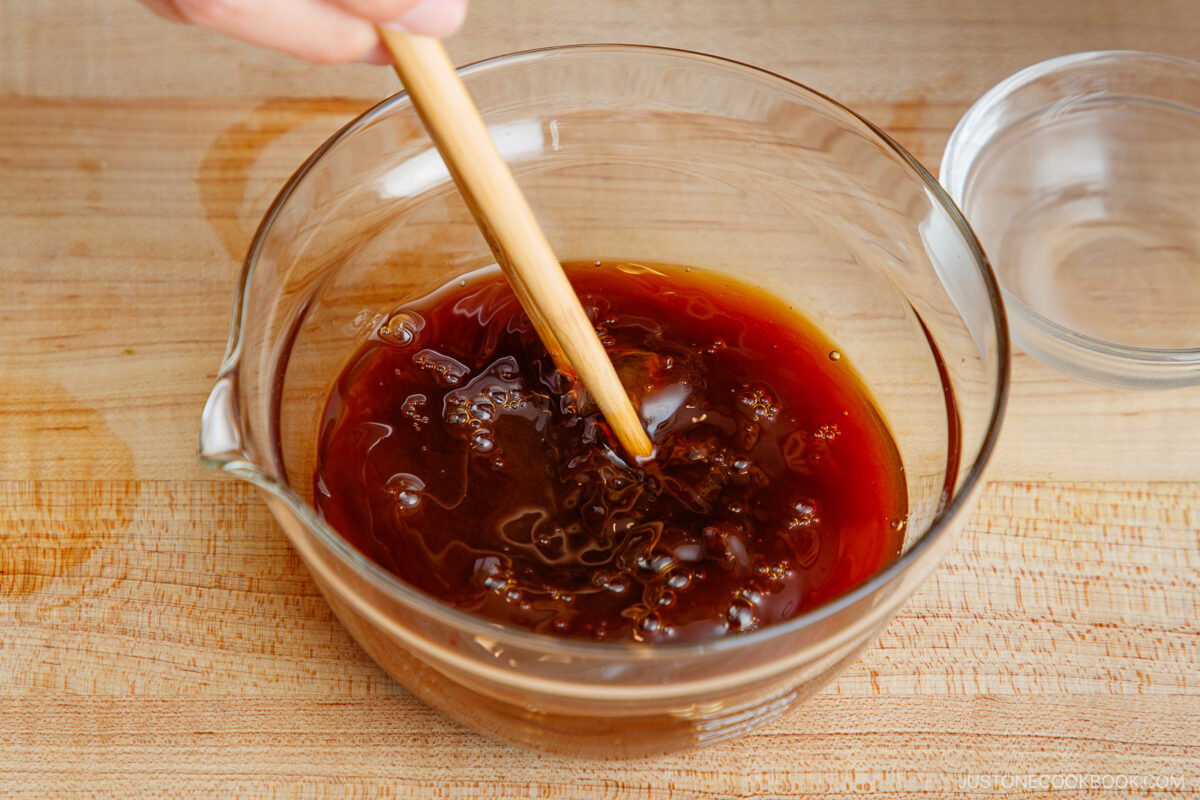
Cooking
- Cook the chicken. Heat sesame oil in a saucepan (or frying pan) over medium heat. Add the white parts of the green onion and grated ginger, and sauté until fragrant. Add the ground chicken and cook while breaking it up until no longer pink.
- Simmer the sauce. Pour the sauce mixture into the pan and stir well. Simmer until the liquid thickens slightly—like a rich meat sauce.
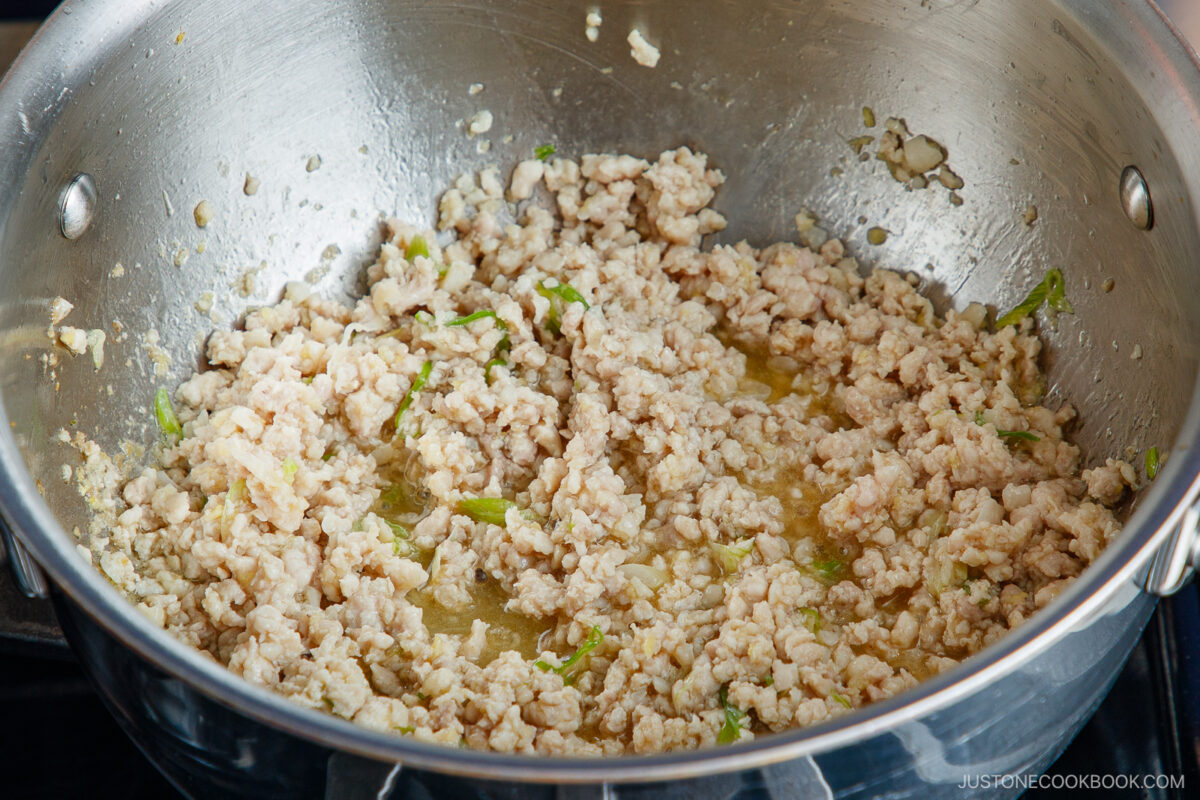
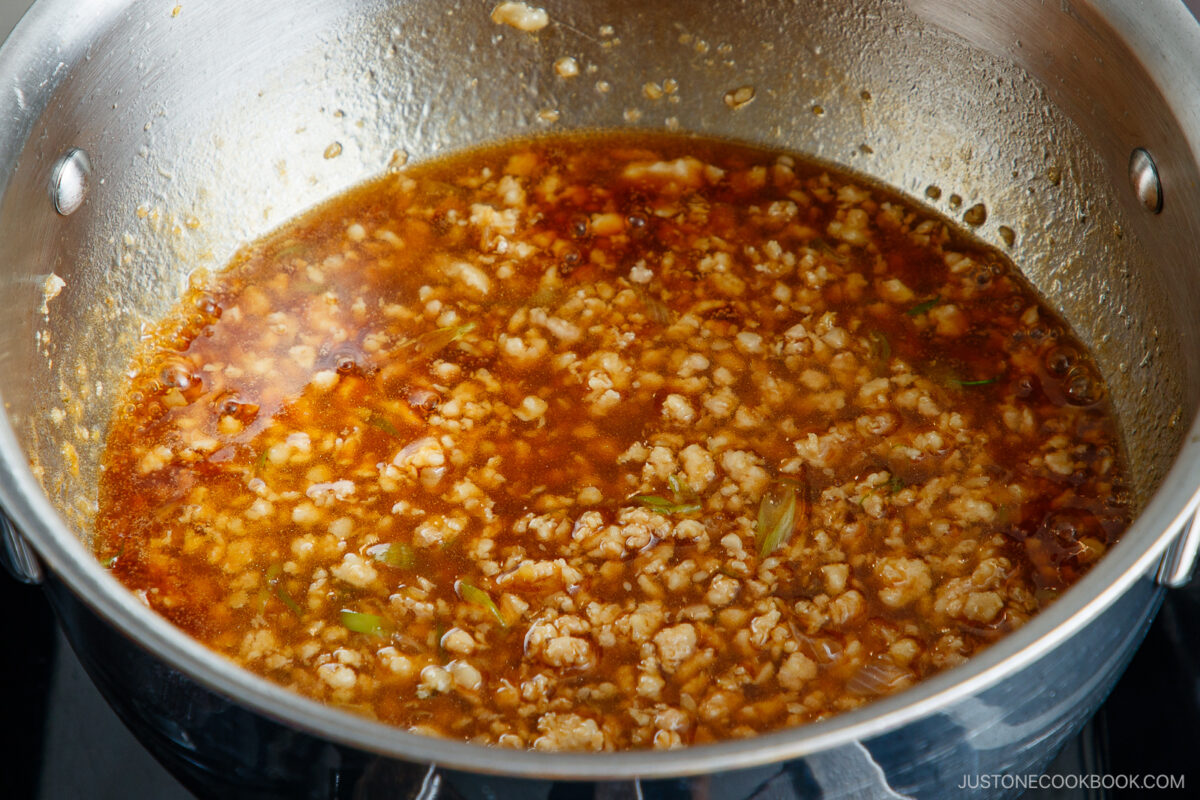
Assemble
- Reduce the sauce to your preferred thickness. Add frozen noodles to boiling water for 1 minute to reheat. Crack an egg into a small bowl, cover with water, pierce the yolk, and microwave one at a time on half power for 90 seconds. Divide the hot noodles into serving bowls, top with chicken and egg, and garnish with green onion and shichimi togarashi.
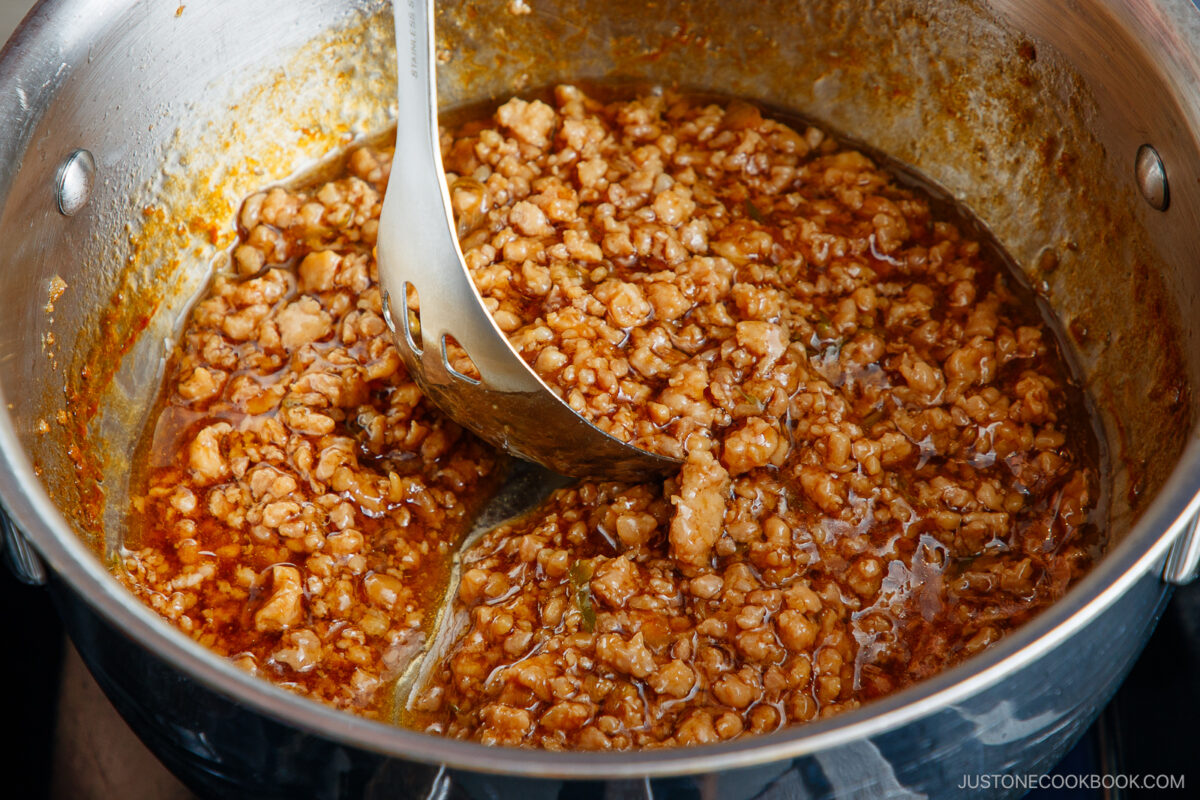
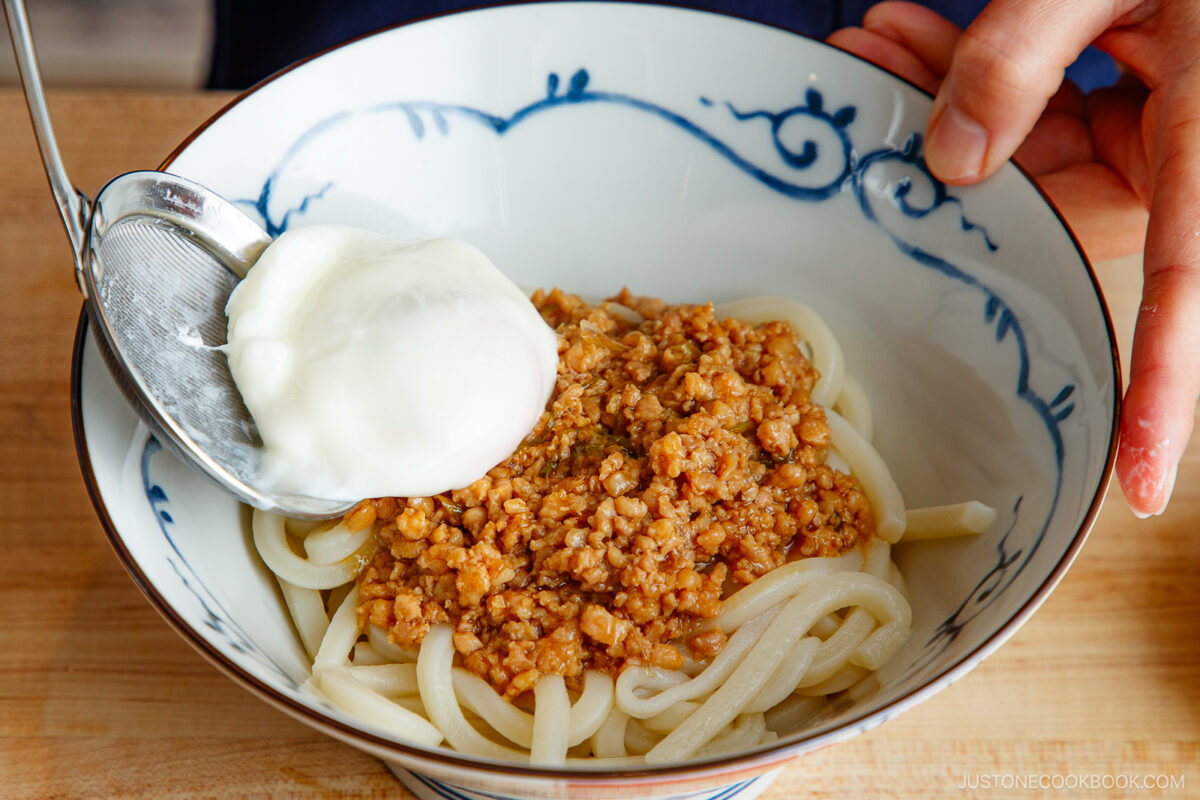
Nami’s Recipe Tips
- Use a small, deep bowl: This shape helps the egg submerge easily under water.
- Puncture the yolk: This prevents it from exploding during cooking.
- Don’t overcook the egg: Aim for a soft set with custard-like yolks and silky whites, about 90 seconds for one egg. Remove immediately from the hot cooking liquid to prevent overcooking.
- Adjust sauce thickness: Simmer longer to reduce it to a thicker consistency.
- Reheat udon, don’t boil: Frozen udon needs a quick reheat for 1 minute. Don’t boil or they will loose their springy texture.
- Batch cook: Make extra soboro chicken and freeze for quick future meals, or use it over rice to pack Soboro Bento for lunch the next day.
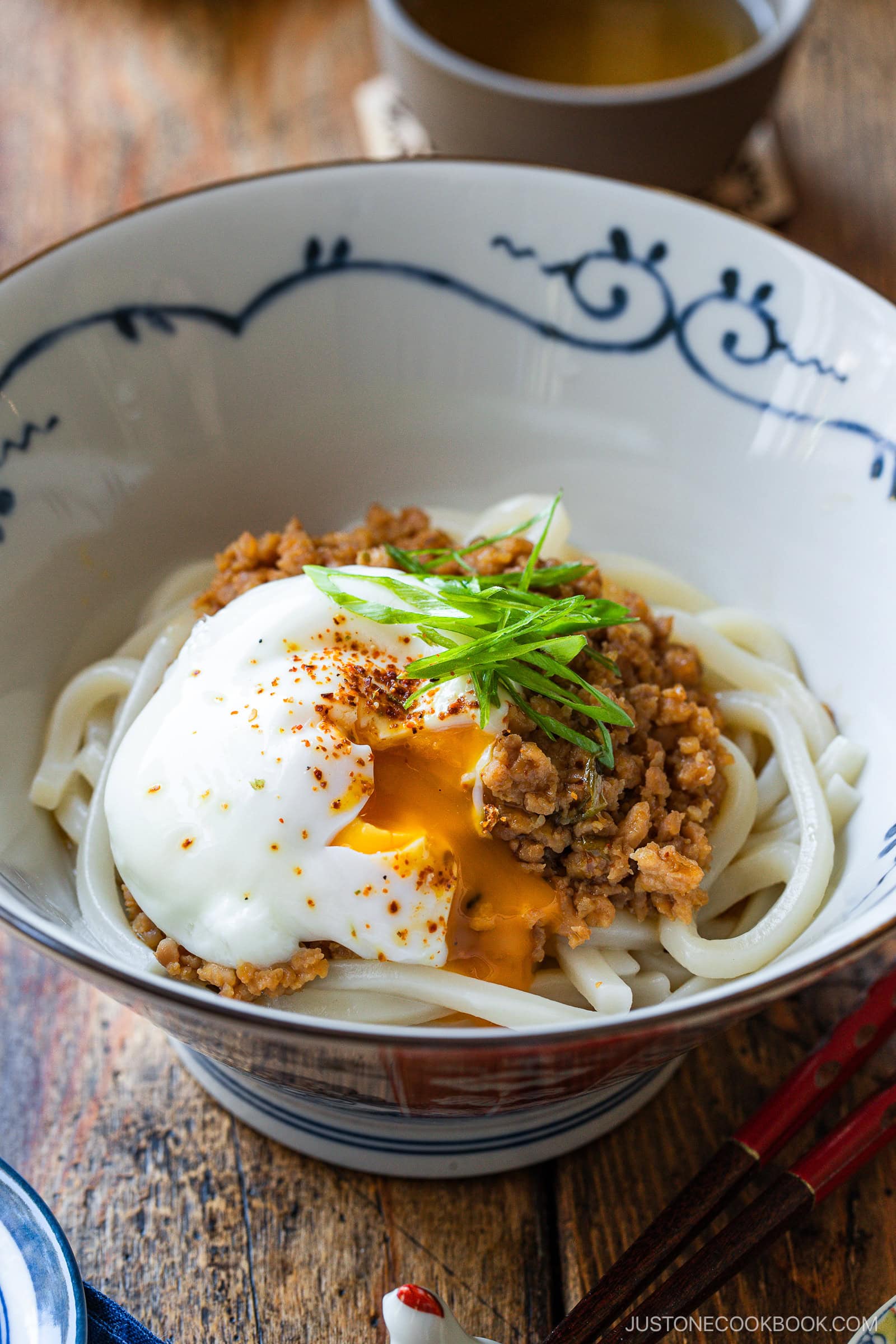
Variations and Customizations
- Different ground meat: Try turkey, pork, or beef instead of chicken.
- Vegetarian: Use crumbled tofu seasoned with soy sauce and mirin.
- Rice bowl dish: Serve the chicken over steamed rice with scrambled egg to make soboro donburi (Soboro Don).
- Extra toppings: Add shredded nori, sautéed mushrooms, or blanched leafy green vegetables.
- Use soft-boiled eggs or my classic Onsen Tamago recipe if you prefer not to microwave.
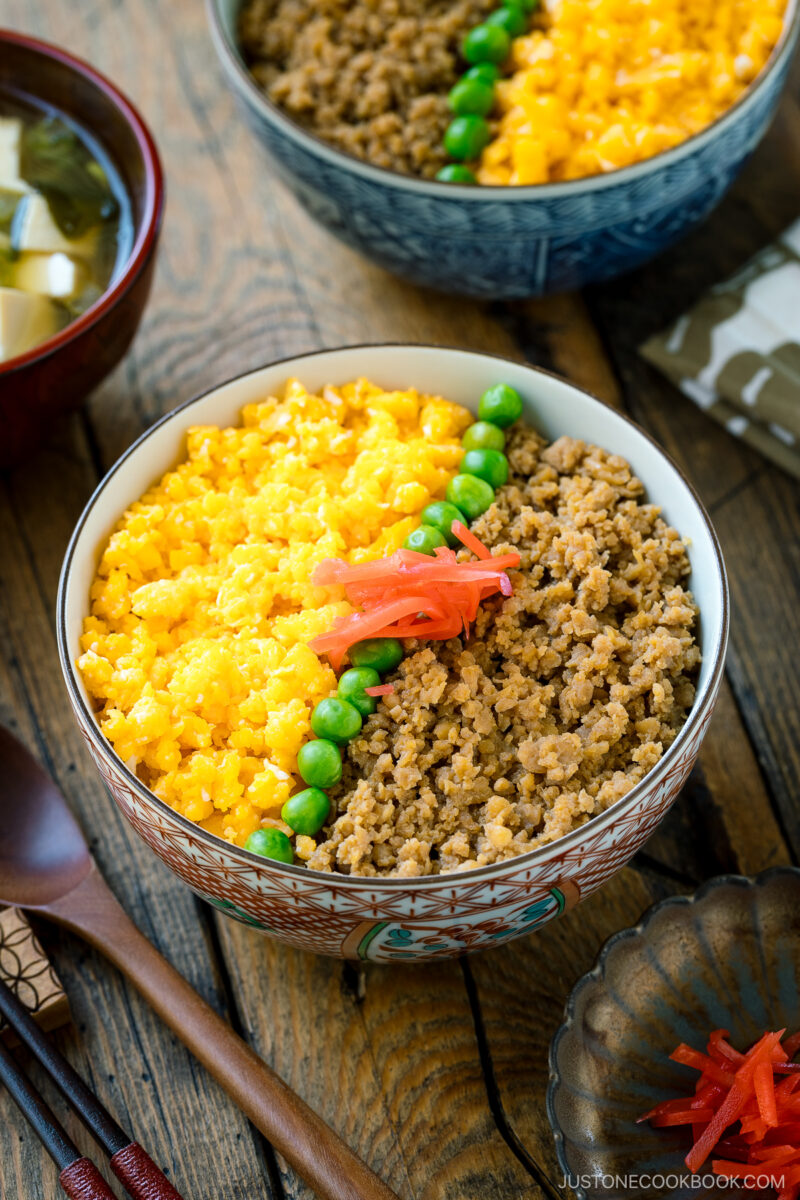
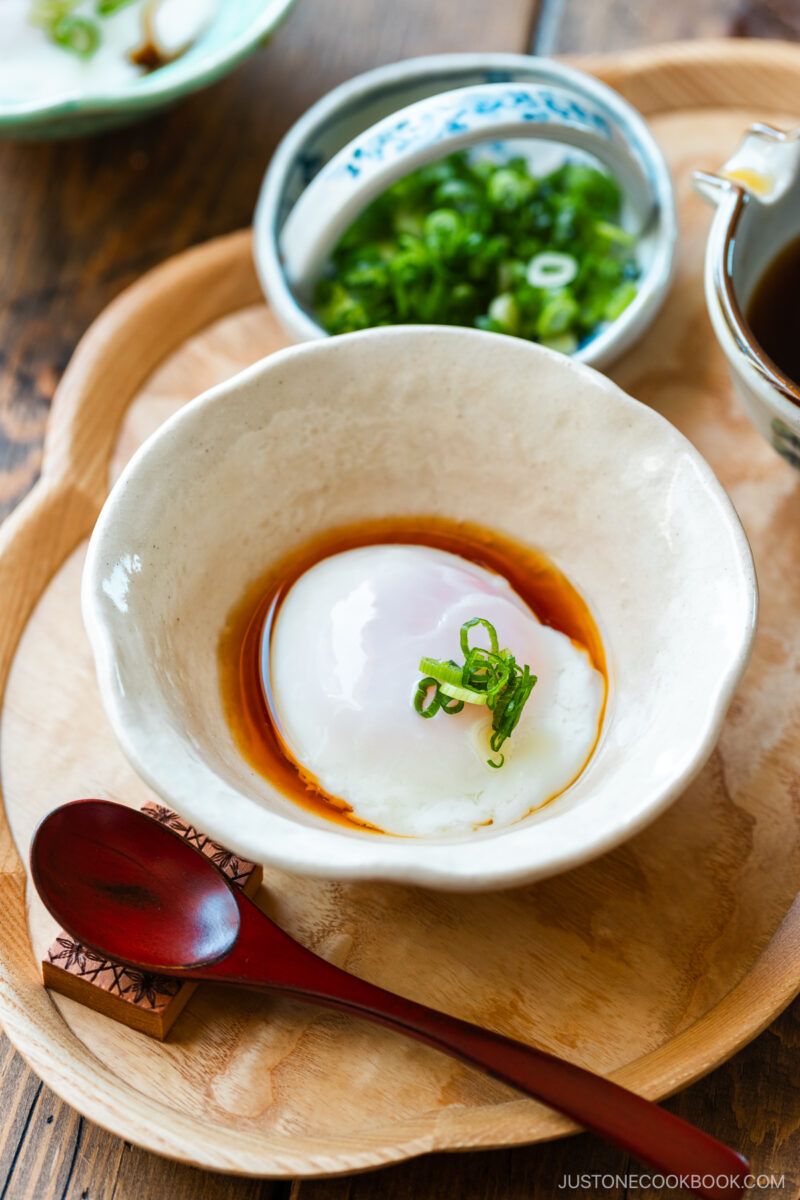
What to Serve with Soboro Udon
Complete your menu with these Japanese food favorites:
- Green Beans Gomaae (Sesame Dressing)
- Okra with Ginger Soy Sauce
- Japanese Pickled Cucumbers
- Easy Miso Soup
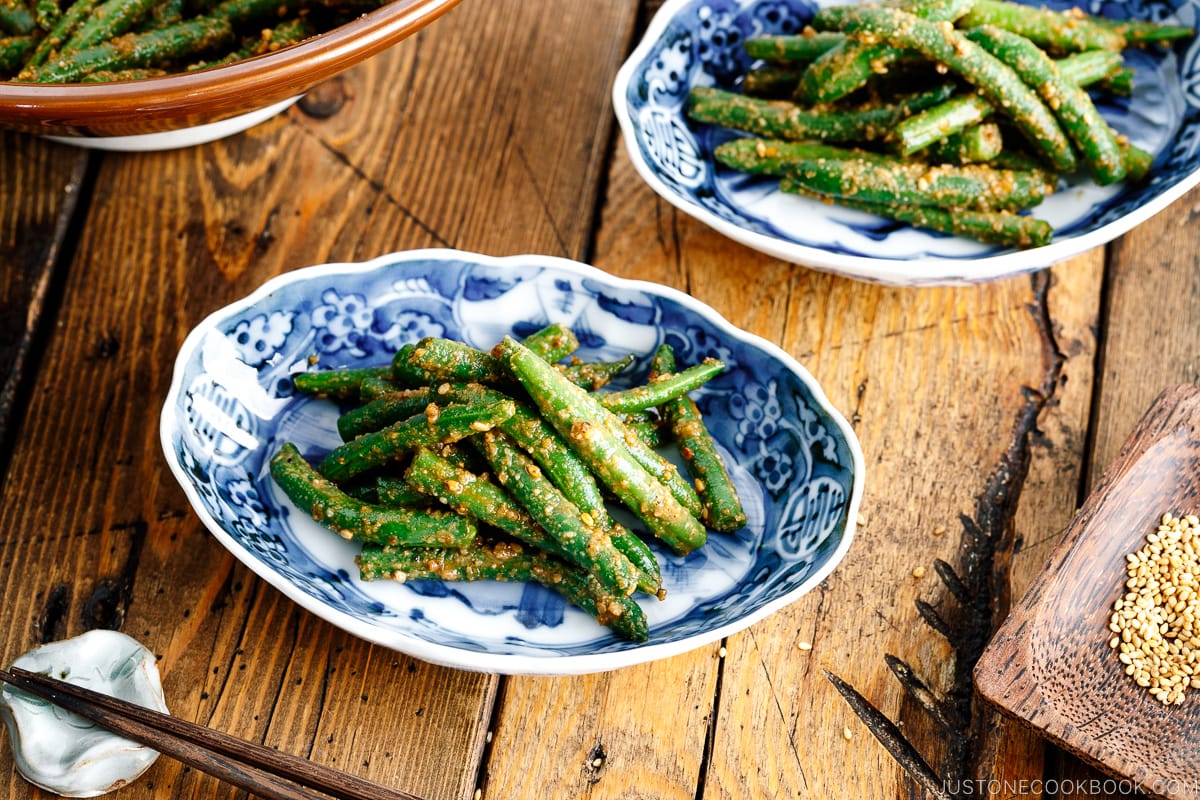
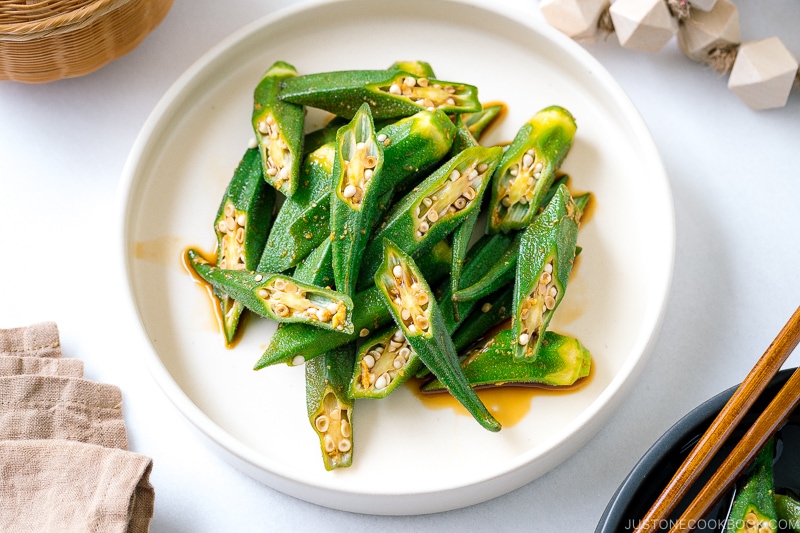
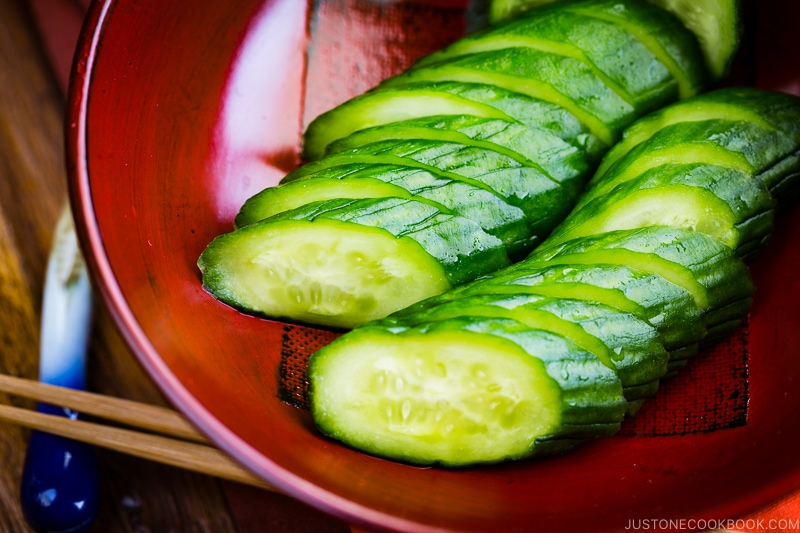
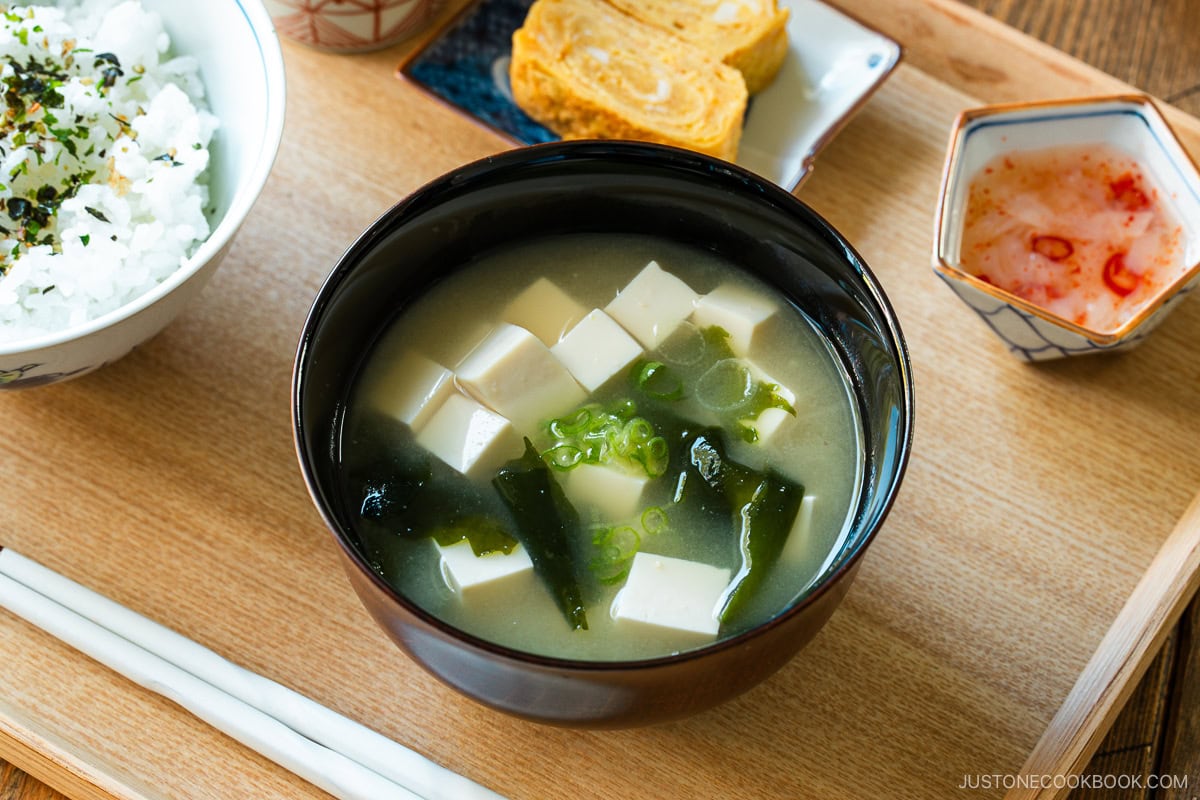
Storage Tips
To store: Keep the soboro chicken in an airtight container for 3–4 days in the fridge or up to 1 month in the freezer. Refrigerate leftover poached eggs for up to 2 days, though it’s best to consume them right after you make them. Frozen udon noodles are best freshly reheated, but you can refrigerate leftovers up to 3 days.
Frequently Asked Questions
Yes! It reheats beautifully and saves time on busy days.
Yes. Prepare each egg in its own bowl as directed, then microwave both bowls at 50% power (500W) for 2 minutes 45 seconds. Check each egg; if any whites are still translucent, microwave in 5-second bursts until the whites set and the yolks stay runny. Microwaves vary, so adjust as needed.
With mirin and soy sauce, the sauce is perfectly seasoned—no sake or extra salt needed. Since this is part of the College Series, I also avoid recipes that require alcohol for cooks under the legal drinking age.
It’s best warm, but you can enjoy this recipe at room temperature in summer.
I’d love to hear how yours turned out! 💛 Please leave a star rating and comment below to share your experience. Your feedback not only supports Just One Cookbook but also helps other home cooks discover recipes they can trust.
Soboro Udon
Ingredients
- 1 green onion/scallion
- 1 inch ginger
- 1 Tbsp toasted sesame oil (for sautéing)
- 8 oz ground chicken
- 2 large eggs (50 g each w/o shell)
- 2 servings udon noodles (1.1 lb/500 g frozen or parboiled udon noodles; 6.3 oz/180 g dry udon noodles; or 10.6 oz, 300 g Homemade Udon Noodles)
- shichimi togarashi (Japanese seven spice) (optional, for a spicy kick)
For the Seasonings
- 3 Tbsp mirin
- 3 Tbsp soy sauce
- 1 Tbsp sugar
- 1 tsp potato starch or cornstarch
- 3 Tbsp water
Instructions
- Gather all the ingredients. Start boiling a large pot of water for the udon.
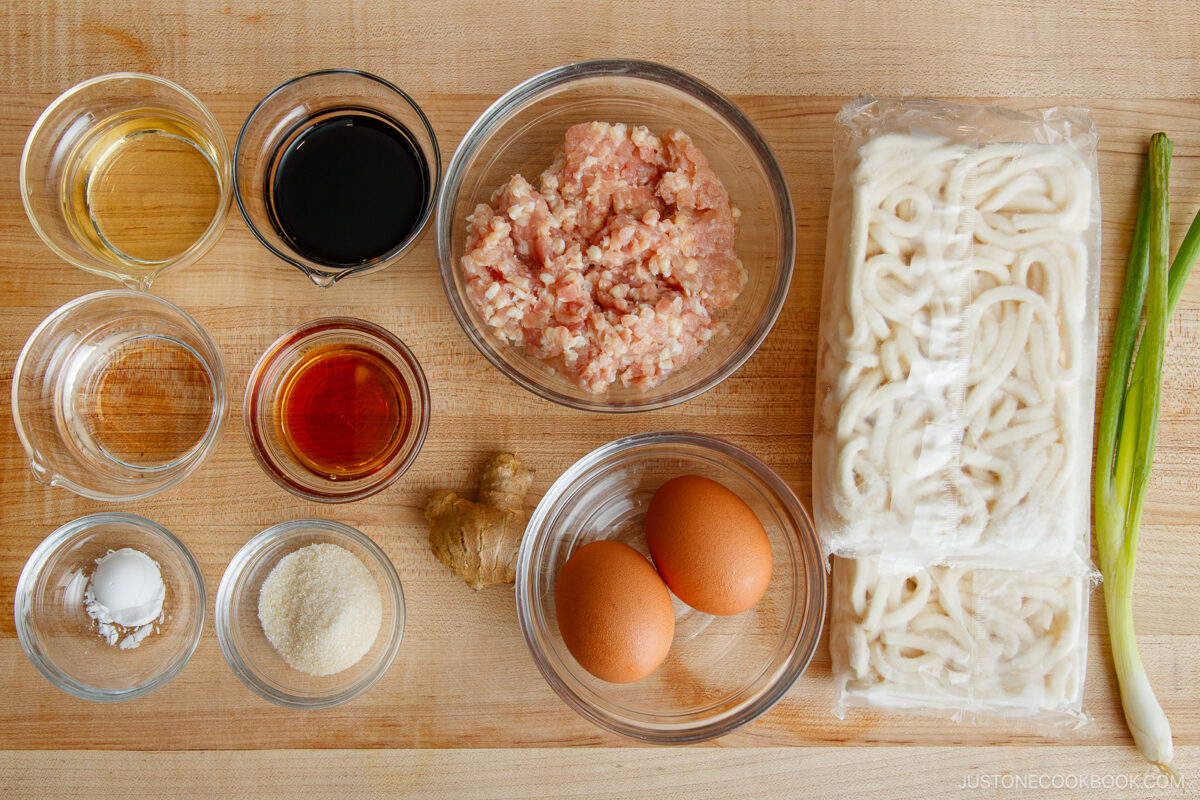
To Prepare the Ingredients
- Thinly slice 1 green onion/scallion diagonally. Separate the white and green parts.
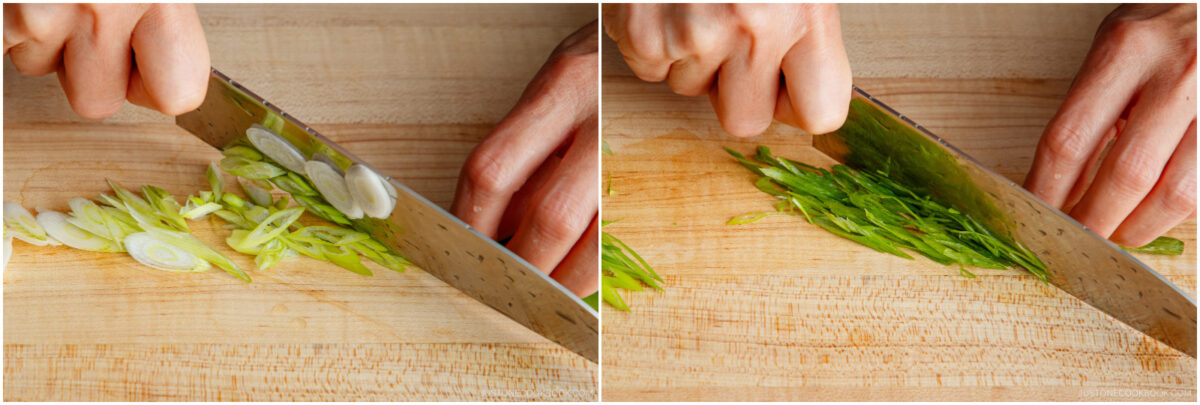
- Peel and grate 1 inch ginger (I use a ginger grater). Measure 1–1½ tsp grated ginger with juice and set aside.
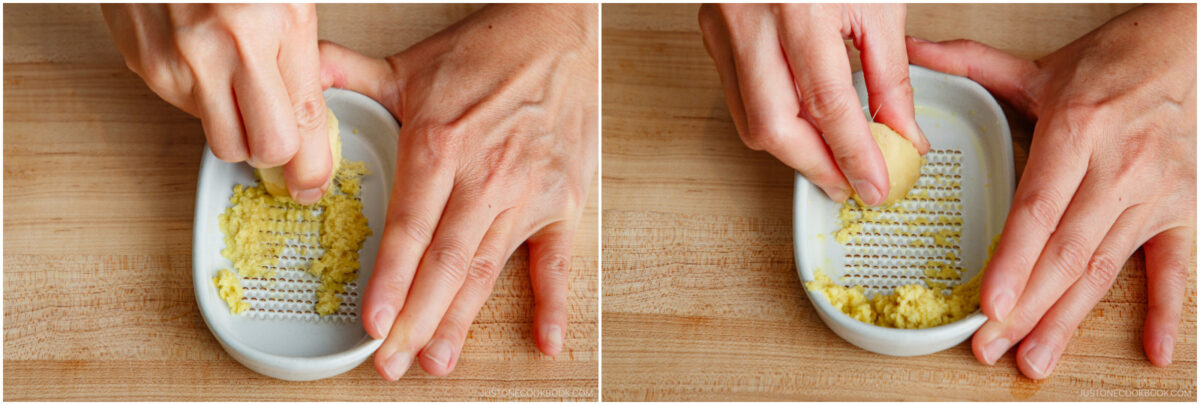
- Combine 3 Tbsp mirin, 3 Tbsp soy sauce, and 1 Tbsp sugar in a bowl.
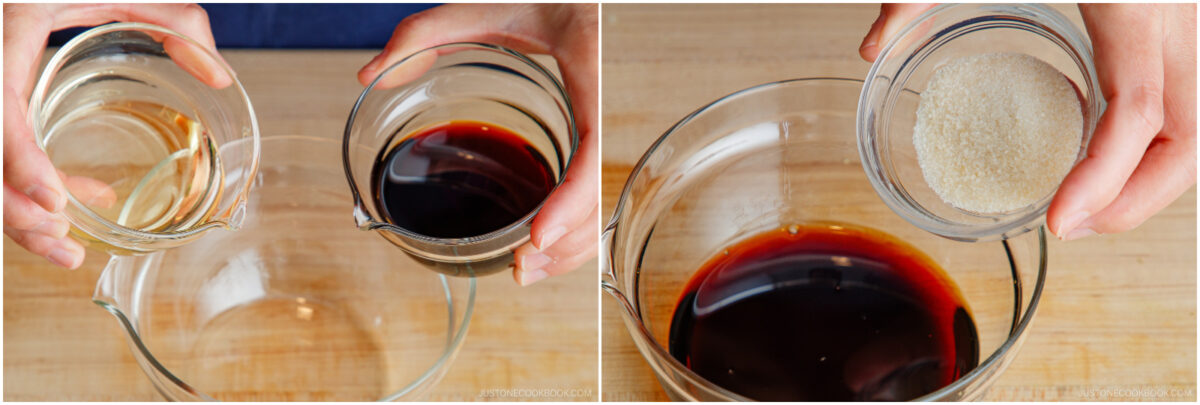
- Add 3 Tbsp water to 1 tsp potato starch or cornstarch in a small bowl and stir to combine. Then, add it to the soy sauce mixture and stir it all together.
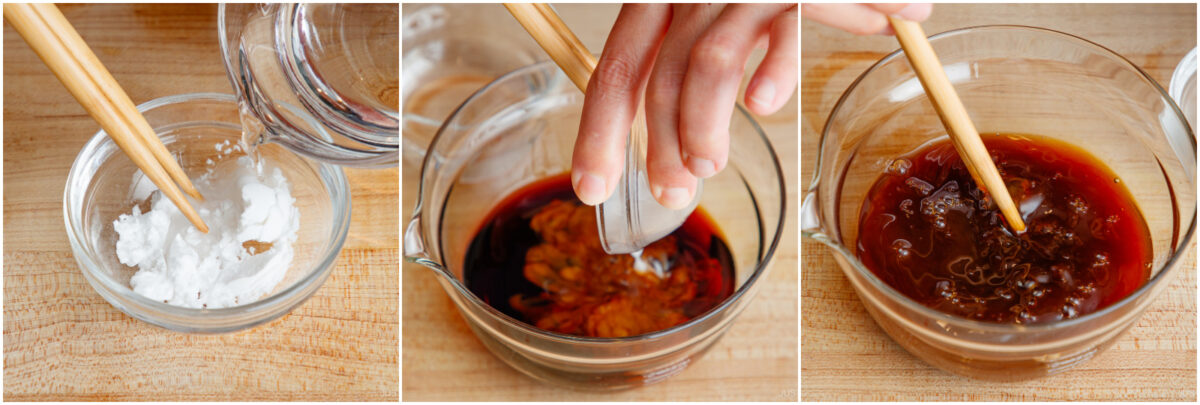
To Cook the Soboro Chicken
- Heat a saucepan on medium heat. When it's hot, add 1 Tbsp toasted sesame oil. Once the oil is hot, add the white parts of the green onion and grated ginger. Sauté briefly with a wooden spatula until aromatic.
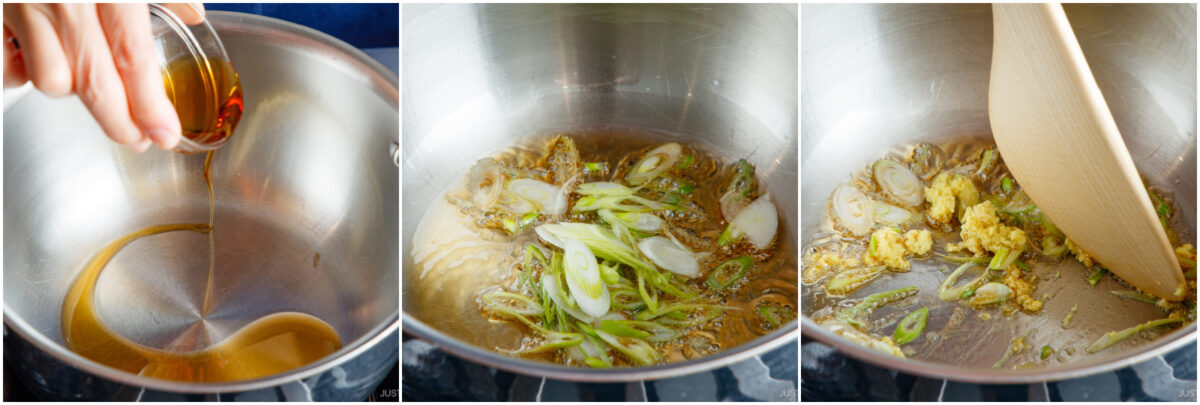
- Add 8 oz ground chicken and sauté, breaking up the ground meat into smaller bits with the wooden spatula. Cook until no longer pink.
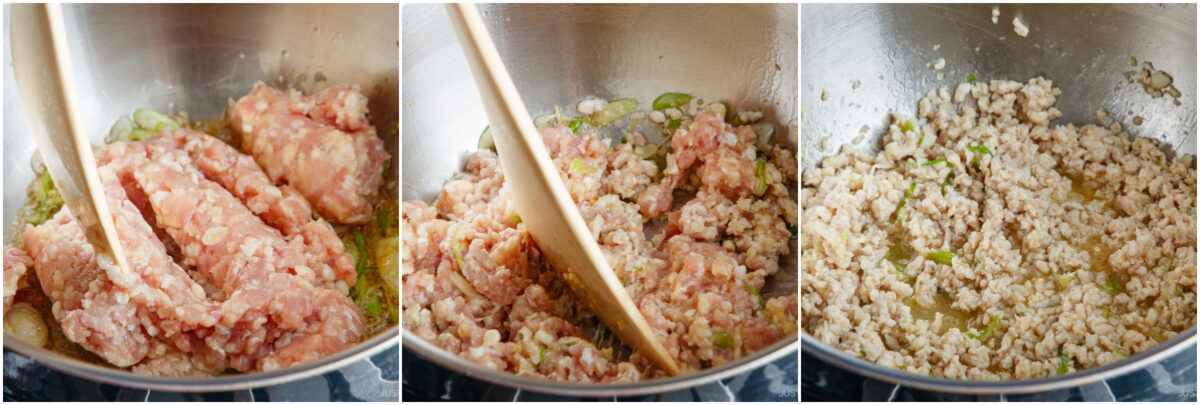
- Pour in the seasoning mixture. Stir and bring to a simmer to thicken the sauce.
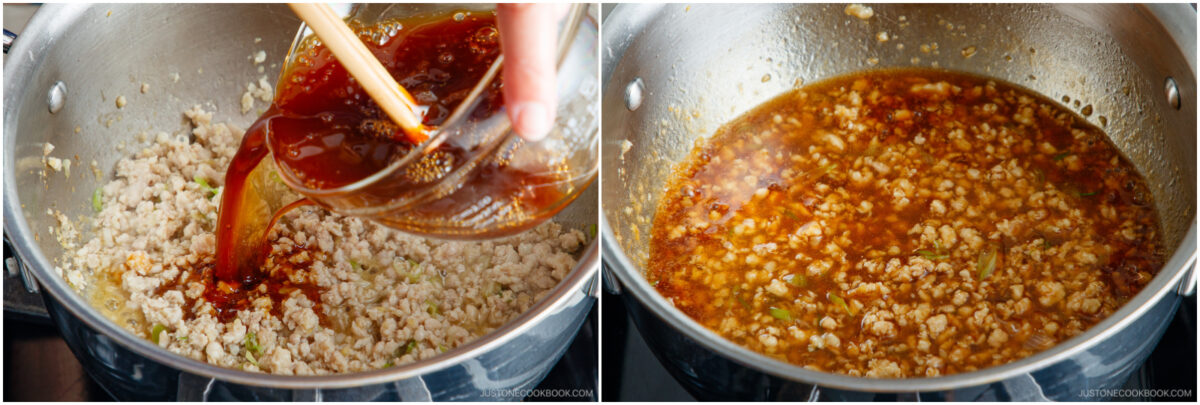
- Reduce the sauce to your liking. I like mine thick—a bit thicker than spaghetti meat sauce. Set aside.
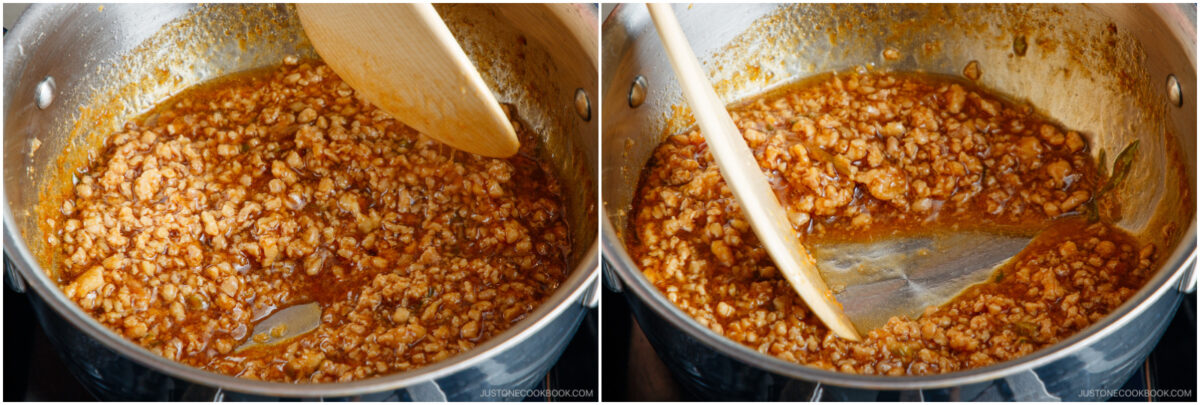
To Cook the Eggs (Onsen Tamago)
- Crack one large egg in a small microwave-safe glass bowl (see tip below). Pour 6 Tbsp water around the edges of the egg and a bit on top to cover it. Next, puncture the yolk with a wooden skewer or toothpick so it doesn't explode during cooking.Nami's Tip: Use a bowl shaped like a rice bowl or miso soup bowl that‘s rounded and somewhat deep, with sides that go straight up. This way, you only need a little water to submerge and surround the egg. If the opening is wide, you'll need more water.
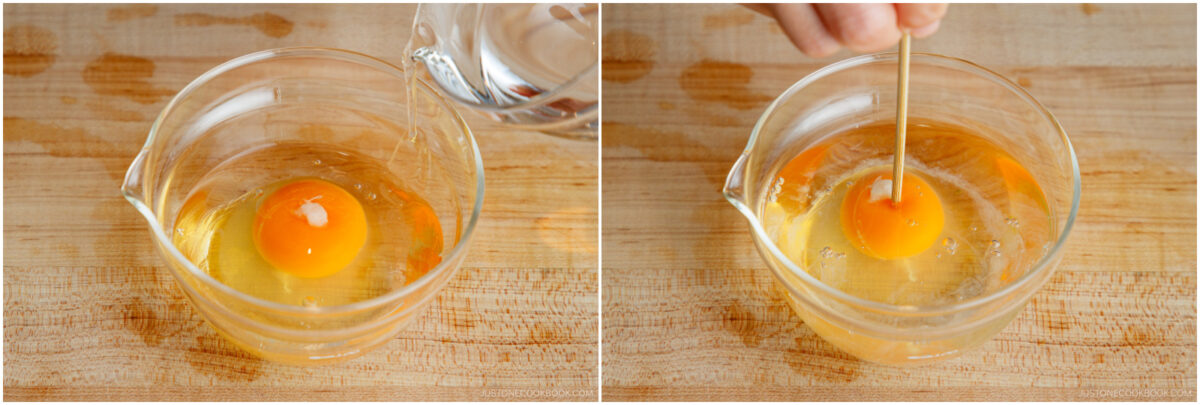
- Place the bowl on the edge of the microwave tray. Microwave at half power (500W) until the egg white solidifies and turns white, about 90 seconds for one egg or 2 minutes 45 seconds for two eggs cooked in separate bowls at the same time. If your egg white is still transparent, microwave for 5 seconds more and check again. Drain and transfer the egg to a small plate or bowl.Nami's Tip: Cook the yolk until pinkish and runny. DO NOT OVERCOOK. The cooked eggs should have silky whites and custard-like yolks.
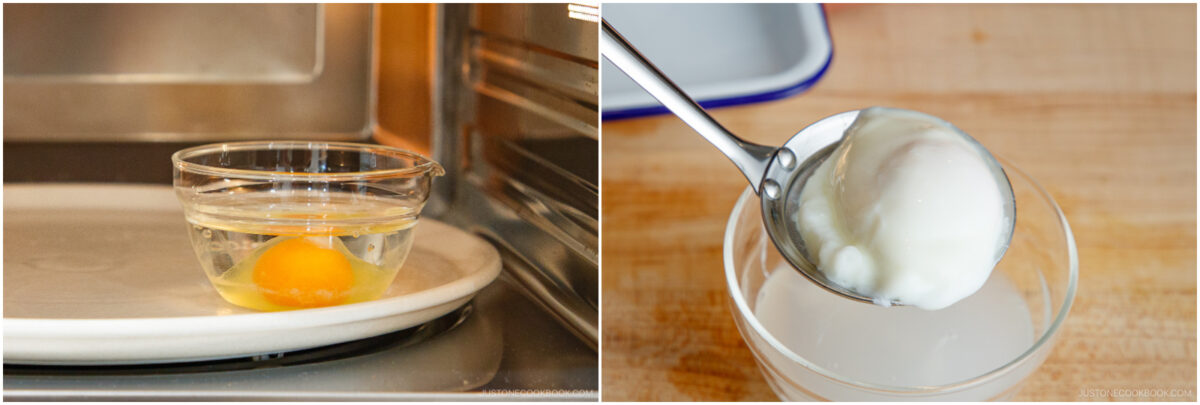
To Build the Soboro Udon
- When the water is at a full rolling boil, add 2 servings udon noodles and reheat or cook according to the package instructions. The brand of frozen Sanuki udon noodles I use requires reheating for 1 minute. Using chopsticks, stir the noodles to loosen them up. Transfer the udon noodles with tongs into individual donburi bowls.Nami's Tip: Do not boil frozen udon. A quick 1-minute reheat keeps the texture bouncy.
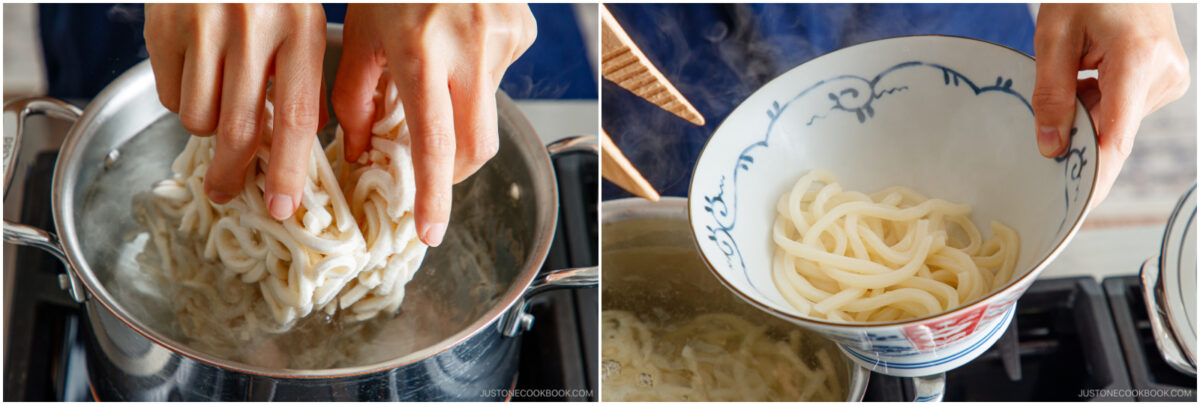
- Ladle the soboro chicken over the warm udon.
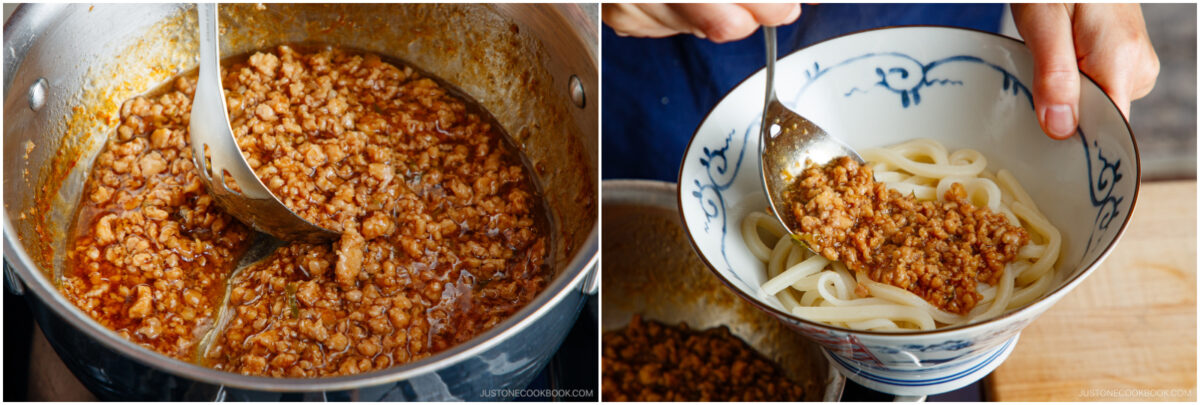
- Top with an onsen tamago. Sprinkle with green onions and optional shichimi togarashi (Japanese seven spice) and serve.
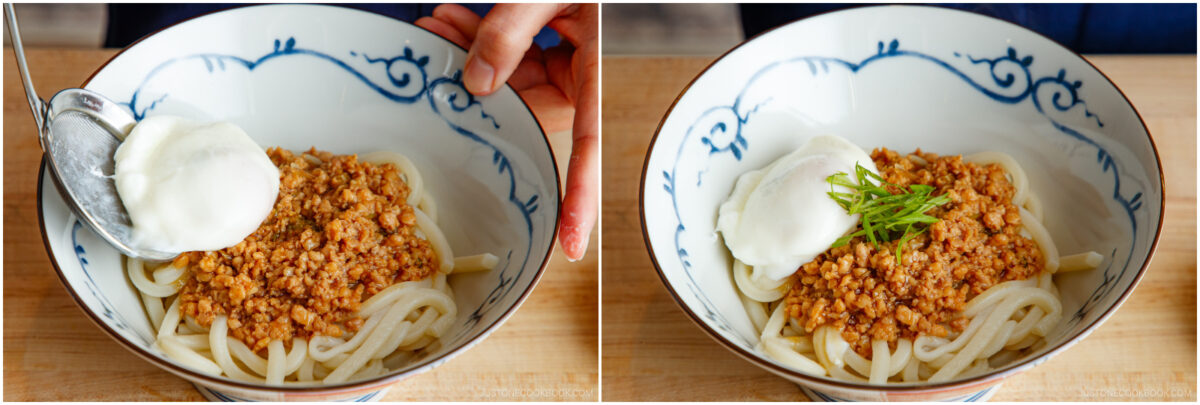
To Store
- Store leftover soboro chicken and egg in separate airtight containers and keep in the refrigerator for 3–4 days. You can also keep soboro chicken in the freezer for up to a month. I recommend cooking the udon just before serving, but you can keep leftovers in the fridge for up to 3 days.
Did you make this recipe?
Tag @justonecookbook on Instagram so we can see your delicious creation!



